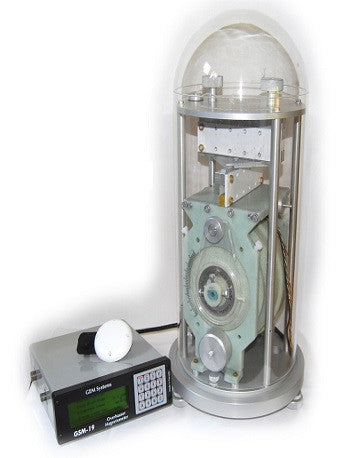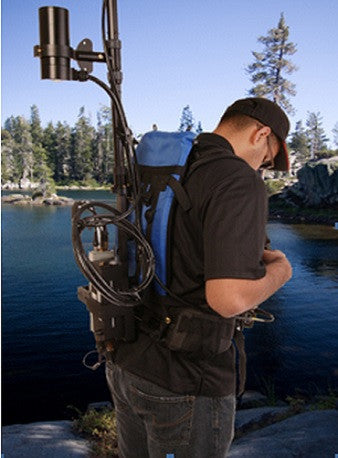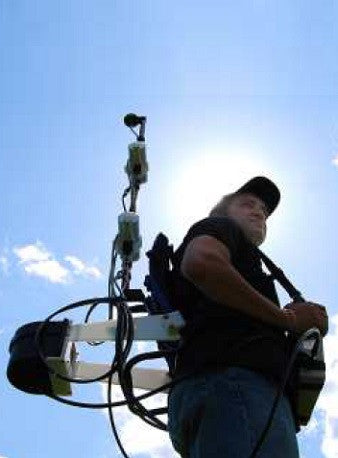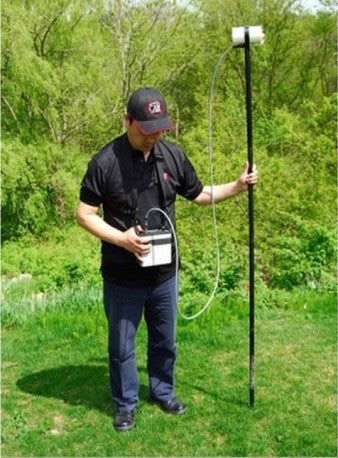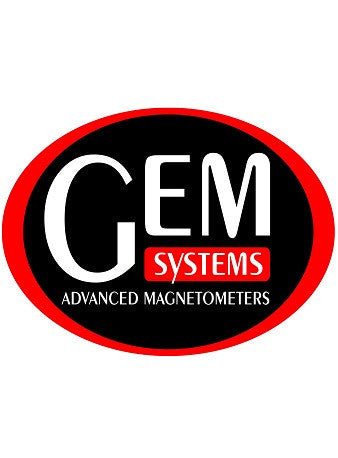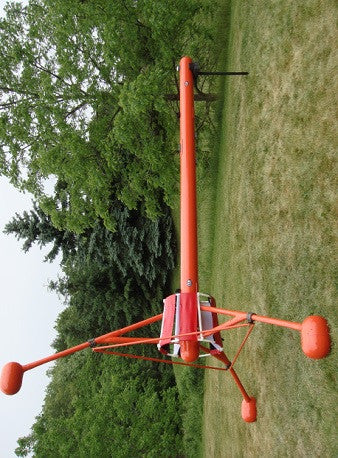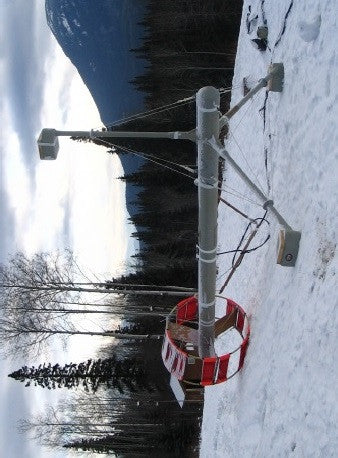dIdD Vector Magnetometers - GSM-19D & GSM-90FDD
Supplied By: GEM Systems, Canada
Rs. 0.00
dIdD Vector Magnetometers
In the past, magnetic observatories relied on a combination of Overhauser, fluxgate and theodolite instruments for obtaining measurements. GEM then introduced the dIdD (delta Inclination/delta Declination) system for high precision results. Next, dIdD was enhanced significantly with the development of the Suspended dIdD system.
Suspended dIdD Benefits
The Suspended dIdD takes advantage of many of the benefits of the Overhauser system. In addition, it offers its own unique benefits for observatory work:
-
Temperature coefficients that reduce drift to less than 0.1 nT/°C for high-end fluxgate magnetometers.
-
Physical suspension of the Overhauser sensor. This has been shown experimentally to contribute to reduced drift.
-
Long term drifts that are less than 2 nT/year. This figure matches or exceeds the best component measurement at any observatory.
-
Simplification in setting up magnetic observatory installations. The new Suspended dIdD eliminates the need for fluxgate magnetometers and thermal insulating structures. In addition, the new system minimizes ongoing system calibrations, which, in turn, frees personnel to concentrate on more essential tasks such as interpreting and understanding data.
-
Proven construction for high reliability. GEM’s systems are designed for robustness from electronics to sensors. Ultimately, the system also exceeds specifications set by Intermagnet – the global network of observatories monitoring the Earth’s magnetic field (www.intermagnet.org).
The Suspended Overhauser Vector Magnetometer system is designed for specialized stationary applications related to directional drilling purposes and has the following key benefits:
-
Integrated System that replaces combined fluxgate / total field installations
-
Long term stability for accuracy and reliability of measurements
-
Unsurpassed immunity to temperature changes and ageing of materials
-
High sensitivity, High speed vector measurements using Overhauser technology
-
Optimized signal to noise ratio through advanced Overhauser design
-
Fast data output and interface with custom Windows data acquisition software
-
Efficient remote control operation / interrogation using RS-232 and USB
-
Flexibility to enable real-time transmission via RS-232 and modem to satellite and phone links
-
Internet based upgrades
Observatory Applications
As described by the Israeli Nuclear group, Soreq, the dIdD is a vector magnetometer offering monitoring of the inclination and declination as well as total intensity of the earth magnetic field. Resolution is 0.01 nT with a recording interval of 5 samples per second.
The Suspended dIdD instrument is the total field magnetometer/gradiometer of choice for customers who require:
-
Minimal drift
-
Simplified observatory setup
-
Minimized ongoing system calibrations
-
Continuous, stable measurement
-
Reliability
-
Compact size
Understanding the dIdD Measuring Sequence
The Suspended dIdD is a vector magnetometer for continuous monitoring of the inclination, declination and total intensity of the Earth’s magnetic field. It is this combination of measurements that sets it apart from fluxgate instruments (i.e. fluxgates only provide inclination and declination).
GEM’s dIdD employs a mutually orthogonal coil system that measures one unbiased and four biased values of total magnetic fields. The axes of the coil system are arranged so that the axes of the mutually orthogonal coils are themselves perpendicular to the Earth’s magnetic field vector, F, in the horizontal plane and vertical geomagnetic meridian plane.
The measurement process is as follows:
-
Initially, equal and opposite currents are sequentially introduced in to the Inclination (I) coil–oriented perpendicularly to F. The resultant deflected values of F (Ip and Im) are recorded by the Overhauser magnetometer. The undeflected value is also recorded.
-
Then, equal and opposite currents are sequentially introduced into the Declination coil (D) which is also perpendicular to F. The D deflection fields lie in the magnetic East – West direction. Resultant deflected values of F (Dp and Dm) are recorded. The Overhauser magnetometer also records the undeflected value.
-
A simple algorithm is used to determine the subsequent changes instantaneous angular changes between the coil axes and the direction of the Earth’s vector, F. These angular changes are dI and dD. Adding dI and dD to baseline values of Inclination and Declination for the coil system gives the instantaneous Inclination and Declination values of F. (Baseline values are determined from absolute measurement.)
The pulsed sequence preserves power; in practice, users acquire readings on demand and save batteries. The continuous sequence polarizes continuously and stops with very small interruptions of a few tens of miliseconds; users can acquire data without losing any interval and obtain full coverage of the terrain.
dIdD Magnetometer Software
The dIdD data aquisition/display software is an interactive Windows 95/NT interactive interface supplied with the dIdD vector magnetometer system. It functions as the instrument’s bi-directional RS-232 terminal. The dIdD software offers the user the option to save the instrument readings to a disk file, while displaying the incoming data in text and graph modes.
The dIdD chart recorder displays the incoming data versus time. The vertical and horizontal scales are calculated automatically so as to display the data within the window. The user can change both the vertical and horizontal increments. The window is divided into ten horizontal and ten vertical increments (by dashed lines). The displayed profile can be scrolled both horizontally and vertically. These changes can be achieved by selecting the appropriate item from the Chart Recorder menu, or alternatively, by using shortcut keys.
DI Vector Magnetometers

GEM Systems latest development, the DI Vector Magnetometer, is an adaptation of the dIdD vector magnetometer, that eliminates the need for a theodolite, by determining declination and inclination (not just changes in inclination / declination).
GEM’s declination-inclination instrument is an Overhauser magnetometer with 2 sets of bias coils (horizontal & vertical) in the magnetic north plane.
The new instrument (DI) simplifies setting observatory magnetometers by eliminating the need for fluxgate magnetometers and thermal insulating structures as before, and now a theodolite system.
Related Products

